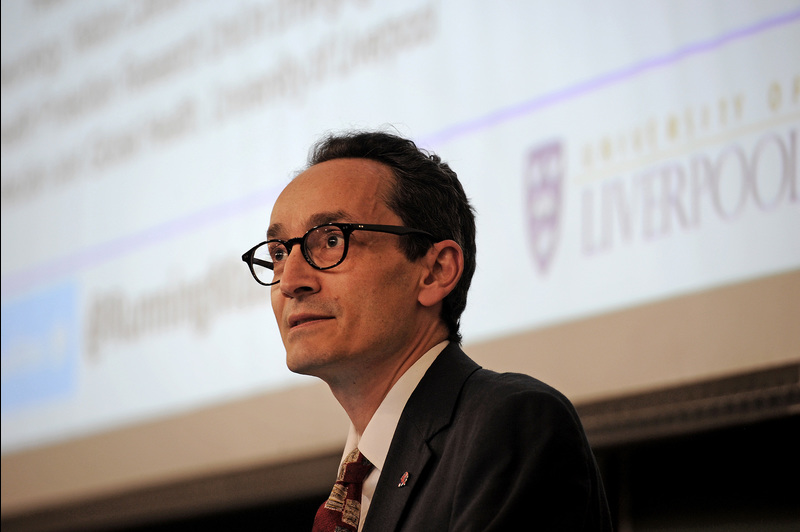Wolfson Memorial Lecture unpacks brain infections
13 March 2020 | Story Niémah Davids. Photo Lerato Maduna. Read time 5 min.
The University of Cape Town’s (UCT) annual Wolfson Memorial Lecture was delivered by Tom Solomon, a professor of neurology at the University of Liverpool in the United Kingdom (UK). He is an honorary consultant neurologist at the Walton Centre NHS Foundation Trust and the Royal Liverpool University Hospital. The lecture was hosted on Tuesday, 10 March.
Solomon presented his lecture under the banner: “The emerging global threat of brain infections”.
The event kicked off shortly before the official launch of UCT’s Neuroscience Centre, housed at Groote Schuur Hospital, and coincided with Global Brain Awareness Week (9–14 March).
Common brain infections
According to Solomon, infections of the brain are caused by viruses, bacteria or fungi, and these pathogens (germs) present themselves in a multitude of shapes and sizes.
At the start of his lecture, he highlighted several common brain infections, including meningitis (inflammation of the membranes that cover the brain and the spinal cord), encephalitis (inflammation of the brain tissue) and myelitis (inflammation of both sides of one section of the spinal cord).
“If we can understand how pathogens spread, we can sometimes predict and do something about it. And of course, if we can control a disease, we’ll see fewer cases,” Solomon said.
“If we understand how pathogens spread, we can sometimes predict and do something about it.”
“Unknown” brain infection
During his time in Asia, neurologists discovered that many children presented with an unknown brain infection.
“We thought it was malaria. The challenge was to look at the causes and to see if it could improve the diagnosis and ultimately improve the outcome,” he said.
After extensive research, scientists discovered that the pathogen responsible for the virus was Japanese encephalitis – a virus spread by an infected mosquito. In Asia, he said, roughly 70 000 children are affected by the virus and a third of them die.
“We see a large number of cases in south Asia. In [one hospital] in India, there’s a whole ward dedicated to Japanese encephalitis. And in Nepal it’s very common.”
Work in Malawi
In an example from Malawi, more recently, scientists specifically placed the rabies virus under the microscope. Rabies is a viral disease that causes inflammation of the brain and is spread by an animal bite.
Malawi described itself as a rabies-free country, but this was because “there was no reporting on rabies at all”.
“It was only [when] we did a post-mortem biopsy of the brain [that] we found they had rabies.”
Solomon said that after an investigation researchers found that a number of Malawian children who had died of malaria had in fact been infected with the rabies virus.
“These children had the malaria parasite in their blood and died,” he added. “They had been diagnosed clinically as having cerebral malaria, but it was only [when] we did a post-mortem biopsy of the brain [that] we found they had rabies.”
The team then conducted additional research to establish what other viruses they might be missing.
“We [conducted] a large study on children suspected [of suffering from] brain infection and we found a whole range of other viruses as well,” he said.
Advances in meningitis
Research on meningitis is advancing too. Solomon said that although researchers have found that the number of bacterial meningitis cases in the UK have dropped as a result of vaccines, “We’re seeing that viral meningitis [cases] are more common now.
“If we just stop to think about new approaches to diagnosis and using these approaches in other brain infections; if we understand the disease mechanisms, that sometimes leads to new treatment.”
 This work is licensed under a Creative Commons Attribution-NoDerivatives 4.0 International License.
This work is licensed under a Creative Commons Attribution-NoDerivatives 4.0 International License.
Please view the republishing articles page for more information.










